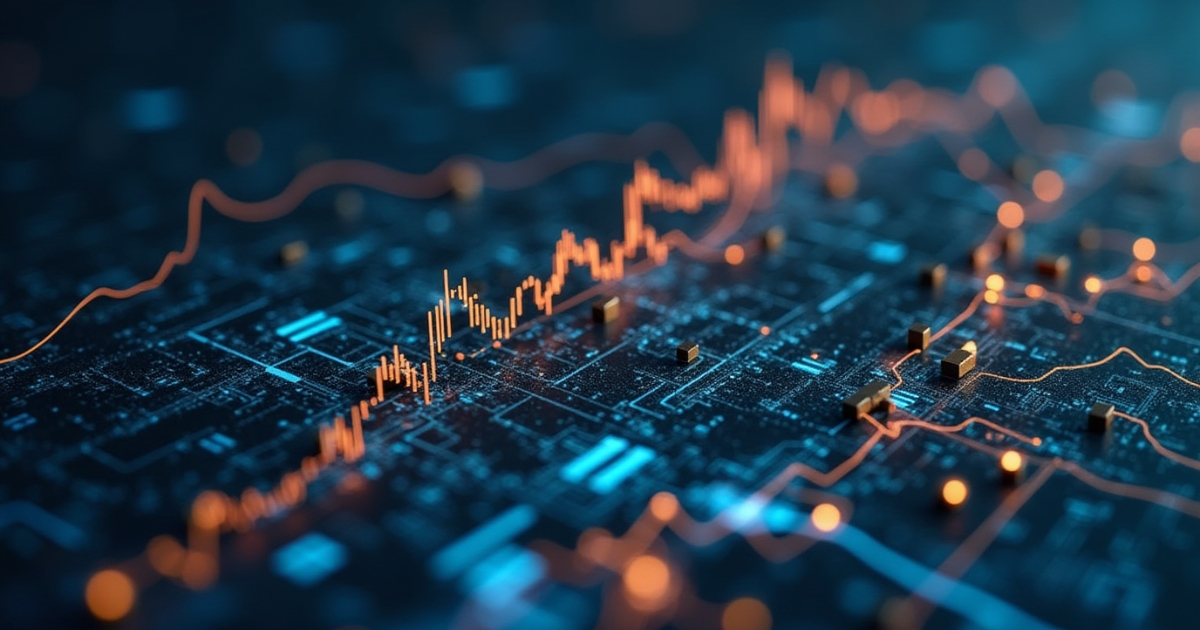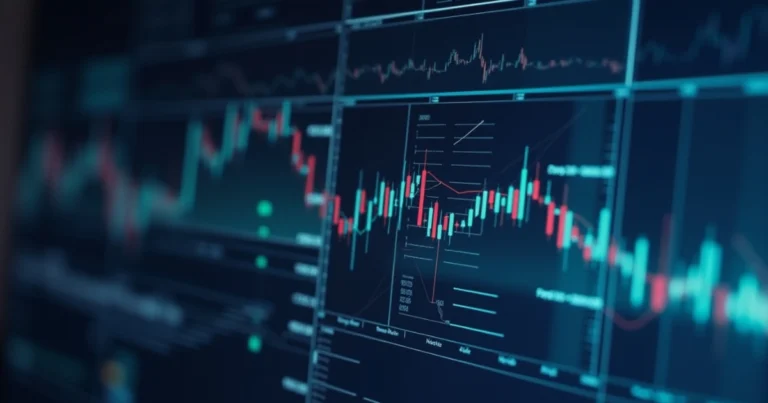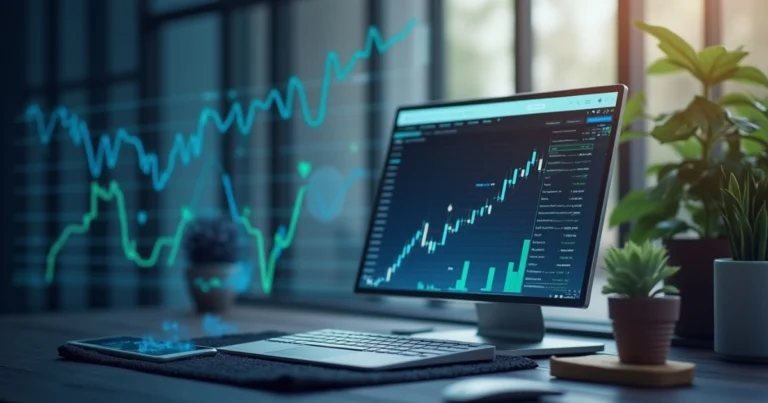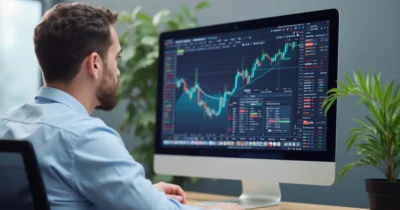The energy industry is undergoing a radical transformation. From digitalization to the rise of renewable energy sources, advancements are happening at a rapid pace. If you’re looking to stay ahead of the curve, understanding the energy trading platform trends that will define 2025 is crucial. These platforms are becoming more than just a space for buying and selling energy; they’re evolving into powerful tools that are reshaping the way energy markets operate globally.
In this article, we’ll explore the key trends you can expect to see in 2025 and beyond, providing valuable insights to help you navigate this fast-evolving sector. Whether you’re an energy trader, investor, or just someone interested in the future of energy, these trends will directly impact how energy is bought, sold, and managed in the near future.
Table of Contents
Why Energy Trading Platforms Are Critical in 2025
Energy trading platforms are at the heart of a digital revolution in the energy sector. As renewable energy becomes a larger part of the global energy mix, these platforms are evolving to accommodate new energy sources and innovative trading methods.
The Role of Technology in Shaping Energy Markets
With the rise of Artificial Intelligence (AI), blockchain, and the Internet of Things (IoT), energy trading platforms are becoming more intelligent, secure, and efficient. AI is being used to predict energy consumption patterns, automate trades, and optimize energy portfolios. At the same time, blockchain guarantees transparency and security in energy transactions. In 2025, we can expect these technologies to be even more integrated into energy trading platforms.
- AI: AI will provide energy traders with advanced tools to predict market trends and optimize buying and selling decisions.
- Blockchain: This decentralized technology ensures that transactions are secure, transparent, and traceable, reducing fraud and providing real-time insights.
- IoT: IoT devices connected to energy grids allow platforms to track energy production and consumption in real-time, improving decision-making for traders.
The Shift Toward Renewable Energy Sources
As the world transitions to cleaner energy sources, the role of renewable energy in trading platforms will increase. Platforms will become crucial for the trading of solar, wind, and other renewable energy credits (RECs). This will not only help businesses meet sustainability goals but will also offer new opportunities for traders and investors.
Energy trading platforms in 2025 will support the trading of renewable energy in several ways:
- Solar and Wind Energy: As wind and solar power become more prevalent, platforms will help manage the variable supply and demand these sources bring.
- Peer-to-Peer (P2P) Trading: You may soon be able to trade energy directly with your neighbors, using platforms to buy and sell energy without going through a centralized utility.
Top Energy Trading Platform Trends to Watch in 2025
Now, let’s dive into the top trends that will shape energy trading platforms in 2025 and beyond. These trends reflect how technology, market dynamics, and consumer behavior will drive change in the energy sector.
Trend 1: Decentralized Trading and Blockchain
Blockchain is set to revolutionize energy trading. By 2025, more energy trading platforms will adopt decentralized technologies that allow for secure, peer-to-peer transactions. This shift will enhance transparency, reduce the need for intermediaries, and provide greater security for traders.
- What to Expect: Blockchain will streamline trading processes, reduce transaction costs, and improve the traceability of energy sales.
- Benefits for You: As a trader, you’ll experience faster, more secure transactions with lower fees. As a consumer, you’ll have access to more flexible pricing options.
Trend 2: AI-Powered Energy Trading
In 2025, AI will be indispensable to energy traders. Platforms will increasingly rely on AI to analyze vast amounts of data and predict market behavior. This will enable traders to make smarter, data-driven decisions in real time.
- What to Expect: AI will be used for everything from predicting energy prices to automating trades and even managing entire portfolios of energy assets.
- Benefits for You: AI will enable you to make more informed trading decisions, minimizing risks and maximizing profits. You’ll have access to predictive tools that were previously available only to large, institutional traders.
Trend 3: Integration of Renewable Energy Credits (RECs)
Renewable energy credits (RECs) are vital for tracking and incentivizing the use of renewable energy. In 2025, energy trading platforms will integrate RECs into their systems, making it easier for businesses and individuals to trade green energy.
- What to Expect: Trading platforms will feature enhanced options for trading RECs alongside energy contracts.
- Benefits for You: If you’re a business looking to meet sustainability goals, platforms will help you purchase RECs efficiently. If you’re a trader, this offers new opportunities in a rapidly growing market.
Trend 4: Expansion of Peer-to-Peer (P2P) Energy Trading
One of the most exciting developments in energy trading is the rise of P2P energy exchanges. As more individuals and businesses generate their own energy through solar panels and other sources, you’ll see an increase in platforms that facilitate direct energy trading between peers. In 2025, this trend is expected to reach unprecedented levels.
- What to Expect: Platforms will allow you to buy and sell energy directly with others in your area, bypassing traditional utilities.
- Benefits for You: As a consumer, you’ll have the opportunity to sell excess energy generated from solar panels or wind turbines to neighbors, and potentially at a better price than what traditional utilities offer.
Tools and Features to Look for in Energy Trading Platforms
As we move toward 2025, the energy trading platforms you use will become more sophisticated and user-friendly. Here are some essential features to look for when choosing a platform to trade energy.
Must-Have Features in 2025
- User-Friendly Interfaces: Trading energy can be complex, but the best platforms will offer intuitive, easy-to-navigate dashboards, even for beginners.
- Real-Time Market Insights: Up-to-date information on energy prices, trends, and news will be crucial for making informed decisions.
- Mobile Compatibility: Whether you’re at home or on the go, platforms must offer mobile apps that provide full functionality.
Comparison of Popular Energy Trading Platforms
| Feature | Platform A | Platform B | Platform C |
|---|---|---|---|
| AI-Powered Analytics | ✅ | ✅ | ❌ |
| Blockchain Security | ✅ | ❌ | ✅ |
| Renewable Energy Integration | ✅ | ✅ | ✅ |
| Mobile App Availability | ✅ | ✅ | ✅ |
Benefits of Adopting Energy Trading Platforms in 2025
Adopting an energy trading platform in 2025 will offer you several key benefits, including:
- Reduced Operational Costs: Automated trading and AI-powered insights will help you minimize errors and optimize energy buying and selling strategies.
- Enhanced Sustainability: Platforms will allow you to trade renewable energy more efficiently, helping you meet sustainability goals while lowering your carbon footprint.
- Greater Flexibility: You’ll have more options to customize energy transactions, whether you’re a large corporation or a small consumer.
Challenges and Risks in Energy Trading Platforms
As exciting as these advancements are, there are challenges and risks to be aware of when adopting energy trading platforms.
- Cybersecurity: With the rise of digital trading, cybersecurity will be a top concern. Protecting your data and assets will require using platforms with robust security protocols.
- Regulatory Compliance: Energy trading platforms will need to adhere to a growing number of regulations. Understanding these laws and how they affect you will be key to successful trading.
- Balancing Traditional and Renewable Energy Markets: Platforms must manage the integration of renewable energy without disrupting the established energy markets. This can create market volatility in the short term.
FAQ: Common Questions About Energy Trading Platforms
Q1: What is an energy trading platform?
An energy trading platform is a digital marketplace where energy producers, traders, and consumers can buy and sell energy, such as electricity or renewable energy credits (RECs).
Q2: How do energy trading platforms use AI?
AI in energy trading platforms helps predict market trends, optimize energy trading strategies, and automate transactions, making it easier for you to make smarter, data-driven decisions.
Q3: Can I trade renewable energy credits (RECs) on energy platforms?
Yes! Many platforms will allow you to buy and sell RECs, providing a way to track and incentivize the use of renewable energy.
Conclusion
As we approach 2025, energy trading platforms are becoming an essential part of the global energy landscape. With advancements in AI, blockchain, and the rise of renewable energy, the opportunities for traders and consumers are expanding. To stay ahead of the game, you need to understand these trends and adapt to the rapidly evolving market. Whether you’re a business looking to reduce costs or a consumer interested in trading renewable energy, these platforms offer a new, exciting way to engage with the energy market.







